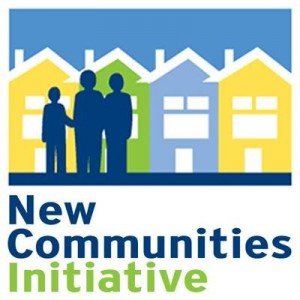
A new report commissioned by the District acknowledges that an effort to transform four communities characterized by deteriorated public housing ‘ the New Communities Initiative ‘ is way behind schedule and needs a reset. To reach completion, the project needs an additional $200 million and a host of administrative changes. But the challenges in redeveloping these areas ‘ Barry Farm, Lincoln Heights/Richardson Dwellings, Northwest One, and Park Morton ‘ serious questions about whether this is the best way to use such a large amount of public resources.
Some recommendations, such as updating project timelines and creating a well-defined management system, would help ease resident fears; others, like eliminating the requirement to replace the large bedroom sizes of some apartments, could prove to be harmful to the communities.
Given the District’s serious affordable housing problems, it makes sense that any effort to redevelop public housing should maintain the affordability and protections residents currently have and should reject changes that may limit affordable housing creation and retention. With that in mind, some of the Policy Advisor’s Recommendations on the District of Columbia’s New Communities Initiative appear reasonable:
- Update timelines to be more realistic: Right now, none of the projects is on schedule, leaving residents unsure of their futures.
- Clearly define the roles and responsibilities of the District and the DC Housing Authority. These agencies must work together on the New Communities Initiative, but as of yet lack well-defined written guidelines for who is responsible for which tasks.
- Establish uniform and fair rules for which residents will be allowed to move into replacement housing. The requirements residents must meet to qualify for the new housing are not clear to all residents. In addition, residents will likely have to meet qualifications set by the developer of each property, which could make it difficult for some residents to return. The requirements should be designed to broadly allow residents who were following rules in their former home to qualify for a new one.
The report also includes some recommendations that might negatively affect New Communities’ residents. These include:
- Broadening the geographic boundaries for each site. The report recommends developing replacement units beyond the boundaries of existing communities because it has been difficult for the District to find affordable land at certain sites. This could disperse members of tightly knit communities, many of whom may want to remain in their neighborhoods. At Barry Farm, for example, 70 percent of residents want to return to their community.
- Not replacing all large public housing units. The report argues that because larger bedroom sizes are not economical, the District should find other options for larger families. But because public housing is often the “housing of last resort” for families with no other options, this could diminish housing opportunities for large families.
The report finds that $200 million in funding ‘ which has not been identified ‘ is needed to complete the New Communities Initiative redevelopment, and this figure does not include infrastructure improvements that will bring the cost even higher. With such a large investment needed, it may be time to take a look at the goal of this project ‘ revitalizing housing for public housing residents ‘ and decide how to best move forward. This could mean continuing with the New Communities plan, but it would also be worth exploring other approaches.
To print a copy of today’s blog, click here.
